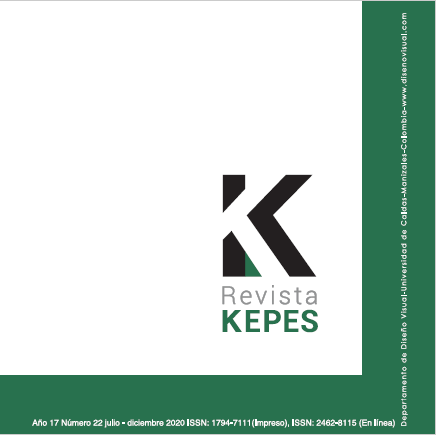Autores/as
Resumen
A diferencia de Melchionne (2013) y Naukkarinen (2013), abogo por una definición expansiva de la estética cotidiana que, además de las experiencias más comunes y cotidianas, incluya los festivales, el turismo y un sinnúmero de actividades llevadas a cabo diariamente por artistas y profesionales de diversas áreas. Establezco continuidades entre las estéticas de la vida diaria, del arte y de la naturaleza. Por ejemplo, el acto de mirar a través de una ventana puede involucrar aspectos de las tres estéticas. Aunque coincido con Melchionne (2013) en que la estética cotidiana está muy ligada a las preguntas por la búsqueda del bienestar subjetivo, asumo una aproximación más expansiva basada en estudios sicológicos recientes sobre la experiencia del asombro; ello con el fin de enfatizar la importancia de esa experiencia en tal búsqueda, vinculando así, los aspectos más sobresalientes de la estética cotidiana, la estética del arte y la estética de la naturaleza.
Palabras clave
Citas
Berleant, A. (1964). The Sensuous and the Sensual in Aesthetics. Journal of Aesthetics and Art Criticism, 23(2), 185-192.
Burke, E. (1990). A Philosophical Enquiry into the Origin of our Ideas of the Sublime and Beautiful. New York: Oxford University Press.
Carlson, A. (1979). Appreciation and the Natural Environment. Journal of Aesthetics and Criticism, 37(3), 267-275.
Davies, S. (2015). The Artful Species. Oxford: Oxford University Press.
Dewey, J. (2005). Arts as Experience. New York: Perigree.
Dickie, G. (1971). Aesthetics: An introduction. Indianapolis: Pegasus, BobbsMerrill.
Dissanayake, E. (1992). Homo Aestheticus: Where Art Comes from and Why. New York: Free Press.
Dogen, E. (2007). Shobogenzo: The True Dharma-Eye Treasury. Volume I (Taisho Volume 82, Number 2582). (G.W. Nishijima & C. Cross, trds.). Bukkyo Dendo Kyokai and Nomata Center for Buddhist Translation. Recuperado de http://www.bdkamerica.org/digital/dBET_T2582_Shobogenzo1_2009.pdf
Dutton, D. (2010). The Art Instinct. New York: Bloomsbury Press. Fitzgerald, F. S. (2011). Winter Dreams. En Th. Fasano (Ed.), Great Short Stories by Great American Writers (pp. 382-399). Claremont: Coyote Canyon Press.
Haapala, A. (2005). On the aesthetics of everyday: familiarity, strangeness and the meaning of place. En A. Light & J.M. Smith (Eds.), The aesthetics of everyday life (pp.39-55). New York: Columbia University Press.
Hanh, T. N. (1987). The Miracle of Mindfulness (M. Ho, tr.). Boston: Beacon Press.
Irvin, S. (2008). The Pervasiveness of the Aesthetic in Ordinary Experience. ritish Journal of Aesthetics, 48, 29-44.
Kant, I. (2013). The Critique of Practical Reason (T. Kingsmill Abbot, tr.). Proyecto Gutenberg. Recuperado de http://www.gutenberg.org/ebooks/5683
Keltner, D. & Haidt, J. (2003). Approaching Awe, A Moral, Spiritual, And Aesthetic Emotion. Cognition and Emotion, 17, 297-314.
Leddy, T. (2012a). The extraordinary in the ordinary. Peterborough: Broadview Press.
Leddy, T. (2012b). Defending everyday aesthetics and the concept of pretty. Contemporary Aesthetics, 10. Recuperado de http://www.contempaesthetics.org/newvolume/pages/article.php?articleID=654&searchstr=leddy
Leddy, T. (2014). Everyday Aesthetics and Happiness. En L. Yuedi & C. Carter (Eds.), Aesthetics of Everyday Life: West and East (pp. 26-47). New Castle upon Tyne: Cambridge Scholars Publishing.
Lintott, S. (2012). The Sublimity of Getating and Giving Birth: Toward a Feminist Conception of the Sublime. En S. Lintott & M. Sander-Staudt (Eds.), Philosophical Inquiries into Pregnancy, Childbirth, and Mothering: Maternal Subjects (pp. 237-250). London: Routledge
Melchionne, K. (2013). The definition of everyday aesthetics. Contemporary Aesthetics, 11. Recuperado de http://www.contempaesthetics.org/ newvolume/pages/article.php?articleID=663 &searchstr=melchionne
Melchionne, K. (2014). The point of everyday aesthetics. Contemporary Aesthetics, 12. Recuperado de http://www.contempaesthetics.org/newvolume/pages/article.php?articleID=700&searchstr=melchionne
Mikulak, A. (2015). All about Awe: Science Explores How Life’s Small Marvels Elevate Cognition and Emotion. Observer, 28, 4. Recuperado de http://www.psychologicalscience.org/issue/april-15Moore, T. (1996). The ReEnchantment of Everyday Life. New York: Harper Collins.
Naukkarinen, O. (2013). What is “Everyday” in Everyday Aesthetics? Contemporary Aesthetics, 11. Recuperado de http://www.contempaesthetics.org/newvolume/pages/article.php?articleID=675
Piff, P. & Keltner, D. (2015, May 24). Why Do We Experience Awe? New York Times (Sunday Review), p. 10.
Plutchik, R. (s.f). Contrasting and Categorization of Emotions. En Wikipedia. Recuperado de https://en.wikipedia.org/wiki/Contrasting_and_categorization_of_emotions#Plutchik.27s_wheel_of_emotionsSaito, Y. (2010). Everyday Aesthetics. Oxford: Oxford University Press.
Shusterman, R. (2007). Asian Ars Erotica and the Question of Sexual Aesthetics. The Journal of Aesthetics and Art Criticism, 65, 55-68.
Shusterman, R. (2012). Thinking Through the Body: Essays on Somaesthetics. Cambridge: Cambridge University Press. Wilde, O. The Decay of Lying. Recuperado de http://virgil.org/dswo/courses/novel/wilde-lying.pdf

 pdf
pdf
 FLIP
FLIP























